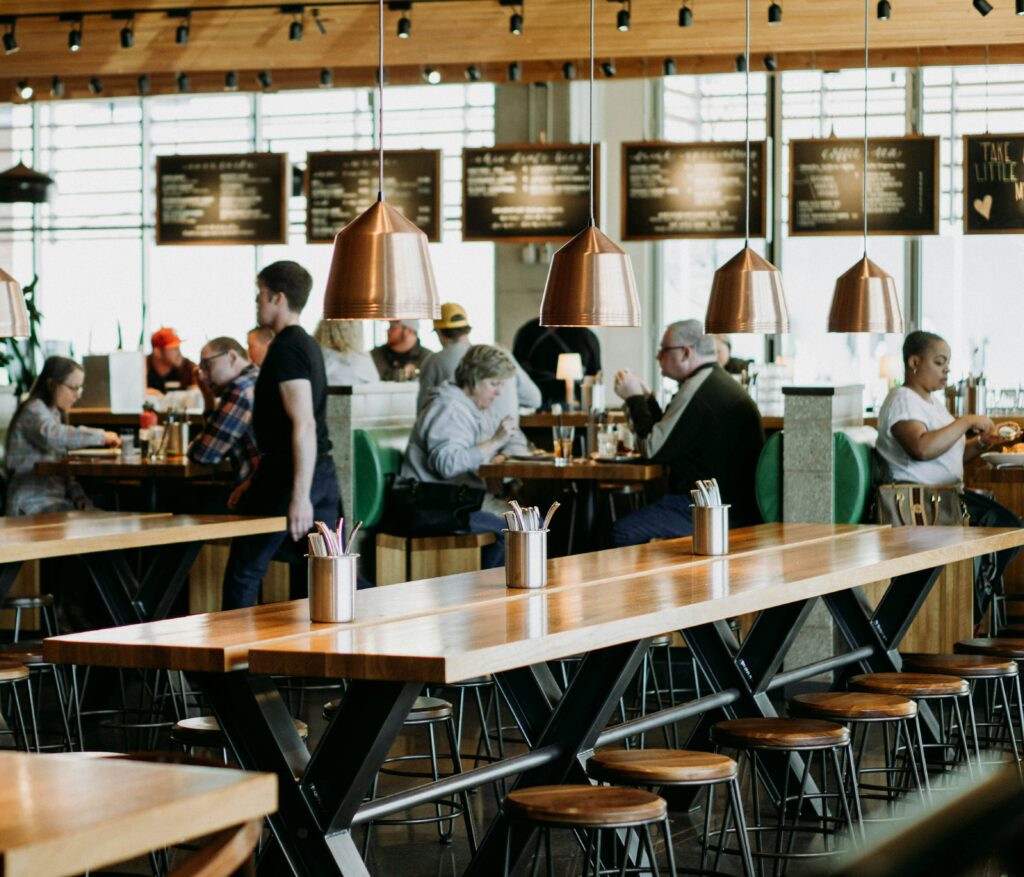The restaurant industry has been serving up a hefty portion of surprises when it comes to real estate. The one-two punch of soaring inflation and the aftermath of the COVID-19 pandemic has crippled certain restaurant chains, allowing new dining concepts to capitalize on the leftover real estate. However, the challenges facing these new concepts extend beyond simply greater availability.
While it’s true that many established chains have been forced to shutter locations due to the financial strains, a closer look reveals some unexpected roadblocks creating speed bumps for both legacy brands and ambitious upstarts alike. What exactly are these hurdles, and how do they differ from the usual real estate pitfalls restaurants have historically faced?
Whether you’re a seasoned restaurateur scouting new locations or a real estate agent representing the buyer of a commercial space, being aware of these restaurant real estate challenges is crucial in 2024.
Restaurant Real Estate Roadblocks in 2024
Location, Location, Location
While economic headwinds and shifting market trends have certainly thrown curveballs at the restaurant industry lately, one of the most daunting roadblocks threatening expansion plans in 2024 is location – specifically, finding the right commercial space.
For any restaurant concept, picking an ideal site is pivotal to success. The wrong location can doom even the most memorable cuisine and atmosphere. But as developers face supply chain constraints and rising costs, new restaurant-friendly developments are becoming scarce in many markets.
This supply chain construction crunch is compounded by rezoning initiatives in numerous cities. As urban populations swell, many municipalities are overhauling zoning regulations to reserve more space for high-density housing instead of commercial properties like restaurants.
Established restaurant districts aren’t immune either. Many landlords opt for more deep-pocketed retail or service tenants in prime areas rather than dealing with the headaches of running food establishments as tenants. This situation often results in premier dining corridors pricing out all but the financially strongest chains and ultra-luxury concepts.
So where can restaurateurs realistically set their sights? Developers suggest adapting by pursuing these location opportunities for new dining concepts:
- Second-tier suburbs with fewer zoning restrictions
- Up-and-coming neighborhoods before gentrification squeezes out restaurants
- Mixed-use sites anchored by offices, apartments or entertainment hubs
- Conversions of dormant commercial parks, former retail big boxes, etc.
- Nontraditional sites like hotels, residential high-rises, airport terminals
The Rise of Mixed-Use ‘Eatertainment’ Districts
Another trend potentially unlocking more viable restaurant locations? Rezoning abandoned shopping malls as mixed-used “eatertainment” districts oriented around dining and leisure activities. Several projects are already underway transforming derelict mall properties into sprawling restaurant rows and reviving surrounding areas in the process.
The benefits for restaurants can be significant – prominent visibility, ample foot traffic from surrounding residences and attractions, flexible configurations and buildouts within the repurposed mall structures, and a built-in “destination” factor given the mixed-use novelty. Meanwhile, municipalities get boosted tax revenues and a revitalized eyesore.
While the current location crunch poses obstacles, adjusting site selection strategies will be critical for restaurant brands hoping to grow footprints in 2024 amidst challenging conditions. An open mind to unlikely opportunities may be what separates success and failure in restaurant real estate today.
Securing Favorable Lease Terms in a Post-Pandemic Market
For many aspiring restaurateurs, landing an ideal location is only half the battle. The other crucial piece is securing favorable lease terms and incentives from the landlord to make funding the built-out space feasible. Unfortunately, a changing real estate landscape means restaurants are now butting heads with landlords over a key incentive – the tenant finish-out allowance.
Prior to the pandemic, it was relatively common for landlords to offer generous tenant improvement (TI) allowances to offset costs associated with constructing and finishing the interior restaurant space to the tenant’s specifications. These allowances could range from $50 to even $150 per square foot in many markets.
However, restaurants are finding landlords offering less attractive finish-out allowances than before the pandemic. Why the sudden pullback by landlords on this crucial incentive? For starters, COVID’s economic shockwaves deeply disrupted the commercial real estate industry.
As businesses failed or downsized, vacancies spiked and pricing power swung in favor of landlords. There’s a decrease in available options, resulting in intensified competition among individuals vying for limited sites with less favorable conditions. As a consequence, navigating deals has become increasingly difficult.
“Bigger Is Better” Is No Longer the Norm
While giant big box stores were once titans of the commercial landscape, 2024 has ushered in a new era of “less is more” when it comes to physical retail footprints. Major retailers are embracing smaller, tighter concept stores concentrated in dense population centers.
“The move toward smaller concept stores is a key part of retail’s evolution,” said Victor Calanog, Head of Commercial Real Estate Economics at Moody’s Analytics. “The best performing retail properties will have owners and operators who are flexible and willing to adapt to what their most important tenants need.”
So just what are those critical tenant needs driving the downsizing boom? In a nutshell – efficiency and accessibility. E-commerce’s meteoric rise forced big box giants to re-evaluate the costly overhead of operating sprawling suburban outlets. By going leaner with retail locations, they can service surrounding population clusters more nimbly.
The restaurant industry is also embracing the “go lean” philosophy when it comes to real estate strategy in 2024. Much like retailers, both upstart eateries and well-established chains are opening condensed “cloud kitchen” or “ghost kitchen” concepts to increase efficiency.
These ultra-compact operations place the entire focus on delivery and takeout, eschewing costly dine-in space for miniscule real estate footprints of just 1,000-2,000 square feet. By operating in shared kitchen facilities or commercially zoned parking lots via retrofitted containers, restaurants are slashing their overhead while capitalizing on booming off-premise demand. The advantages are clear – lower overhead costs and smaller real estate footprints.
Top 5 Cities for Restaurant Growth
While restaurant real estate roadblocks are present globally, present worldwide, specific markets, particularly in the U.S., are faring well. Here are the top 5 cities for restaurant growth in 2024 according to Nation’s Restaurant News:
- Atlanta, Georgia
- Tampa, Florida
- Nashville, Tennessee
- Austin, Texas
- Las Vegas, Nevada
These five cities stand out for their mix of development activity, demographic forces, and cultural relevance to make them prime targets for hungry restaurant brands to feed their expansion goals over the next 12 months.
Overview of the Restaurant Real Estate Landscape in 2024
While navigating the restaurant real estate landscape in 2024 is shaping up to be challenging, those operators willing to embrace new thinking and get creative with their expansion strategies can still find paths to success. From location scouting to lease negotiations to rightsizing footprints, this year will require an open mind and adaptability.
With inflation rates stabilizing, there’s still considerable activity in the market, with deals in progress, albeit at a slightly slower pace. For more insights on the restaurant real estate market, read another recent HomeJab article on Maximizing Restaurant Appeal with Professional Photos.

















